Guide: Laser Direct Writing3D printingtechnology is an effective technique for making complex three-dimensional models using ultrashort laser pulses. Although direct laser writing technology has been widely used, it is still a challenge to design and fabricate high-performance materials with different functions, which usually require a combination of high strength, high ductility, and special functions. At the same time, the laser direct writing process also has certain difficulties in the manufacture of small-sized models. It is difficult to observe the printing process during printing.
In April 2022, researchers from the Institute of Nanotechnology (INT) of the Karlsruhe Institute of Technology (KIT) published a paper entitled “Challenges and limits of mechanical stability in 3D direct laser” in “Nature Communications” writing” (“Challenges and Limitations of Mechanical Stability in 3D Direct Laser Writing”). They propose to use molecular dynamics simulation methods to simulate the laser direct writing (DLW) process and study the effects of printing conditions and aspect ratios on the mechanical properties of printed polymer networks. Studies have shown that changing printing conditions can tune the mechanical properties of printed parts, and that optimal printing conditions can be used to create structures with better mechanical properties. At the same time, the researchers point out that the aspect ratio also plays an important role in tuning the stiffness of the printed structure.
Characterization of printed polymer networks
Monomer conversion, i.e. the ratio of bound functional groups to the total number of functional groups, is an important parameter for polymerization reactions, especially in DLW processes. They first considered the effect of polymerization time and exposure time. To systematically study the relationship between the degree of conversion (DC) and laser power and exposure time, the researchers performed experiments and simulations using cubic polymer networks. As expected, the monomer conversion increases with higher laser power or correspondingly higher exposure time and saturates at high write power. According to the experimental results, the influence of laser power on monomer conversion is greater than that of exposure time, and at lower laser power, exposure time has a more obvious effect on monomer conversion. At the same time, according to the fitting of the experimental results and the simulation results, the proposed simulation model can qualitatively and quantitatively reproduce the experimental results of DC within an acceptable deviation range, and can provide guidance for subsequent experiments.
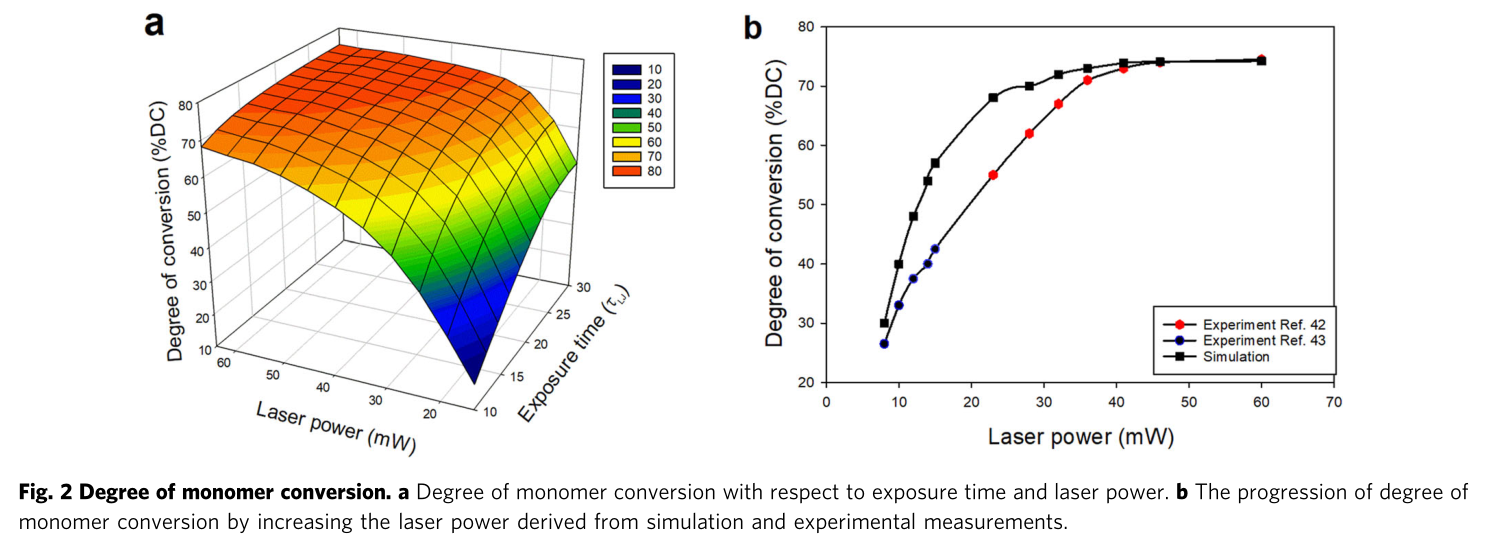
△The experimental and the degree of monomer conversionsimulationresult
To study the mechanical properties, the researchers fabricated cubic polymer networks by applying different laser powers and constant writing speeds. The experimental analysis shows that the increase of laser power leads to higher crosslinking density. The degree of conversion of the monomer increased from 49% to 75% at the applied laser power. They investigated the mechanical properties of the printed network by simulating the stress-strain relationship and calculating the slope of the stress-strain curve under different writing conditions, and the results showed that the stress increased with increasing laser power.
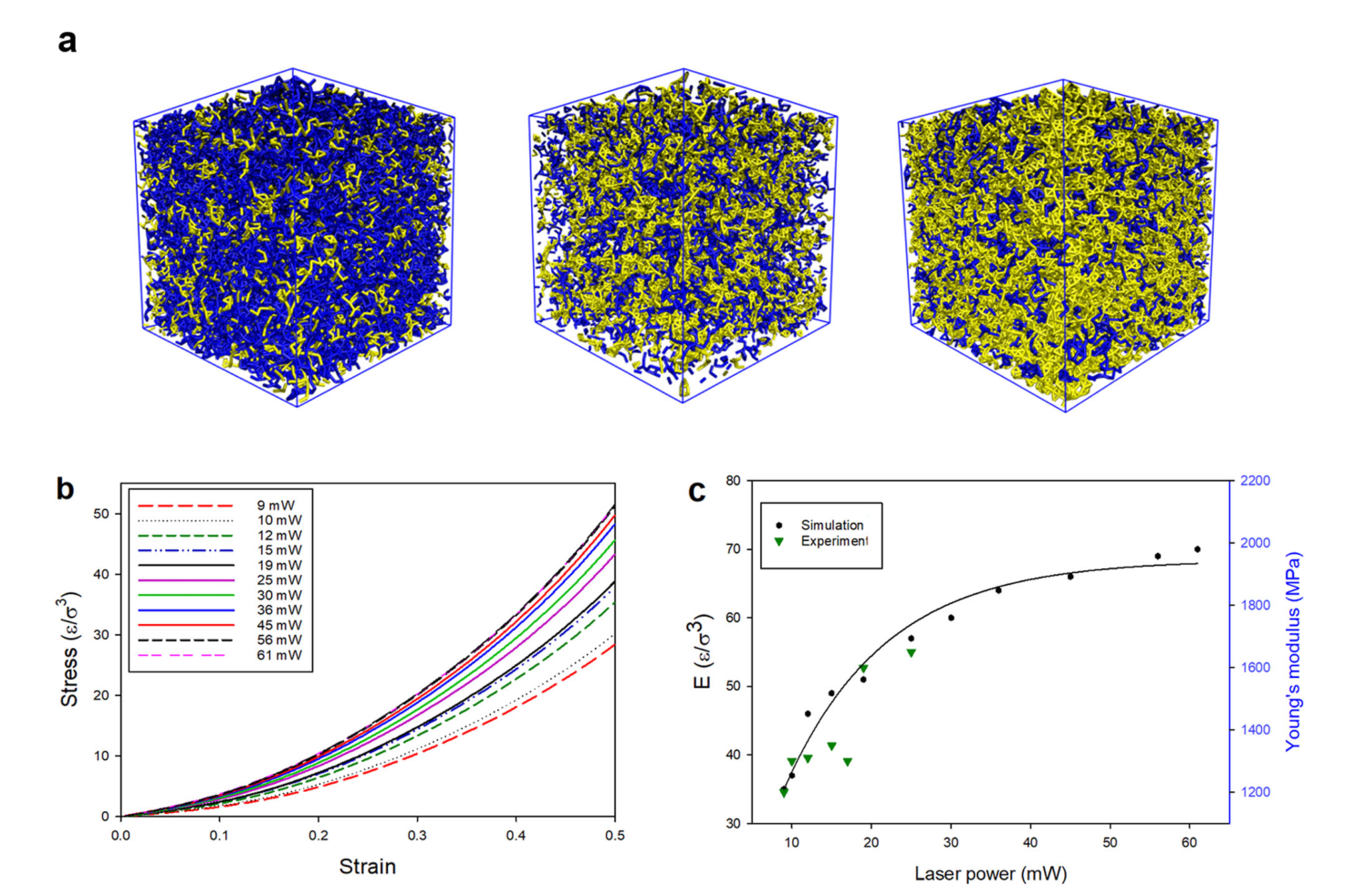
△Effect of laser power a 3D polymer blocks printed with different laser powers, (yellow areas represent cross-linked monomers) illustrating that the cross-linking density increases as the laser power increases from 10 to 46 mW; b application Stress-strain curves of networks printed at different laser powers; c Young’s modulus (E) as a function of laser power, according to simulations and experimental measurements.
The mechanical properties of the printed object need to be adjusted to improve performance in certain applications.
In experiments, it was easier to change the writing speed than the laser power during the fabrication of a single object. To study the effect of exposure time on the mechanical properties of printed objects, the researchers. Cubic polymer networks were fabricated by applying different exposure times (different writing speeds) and constant laser power (46 mW). Experimental results show that Young’s modulus increases with exposure time, which is a direct result of the increased degree of monomer conversion.
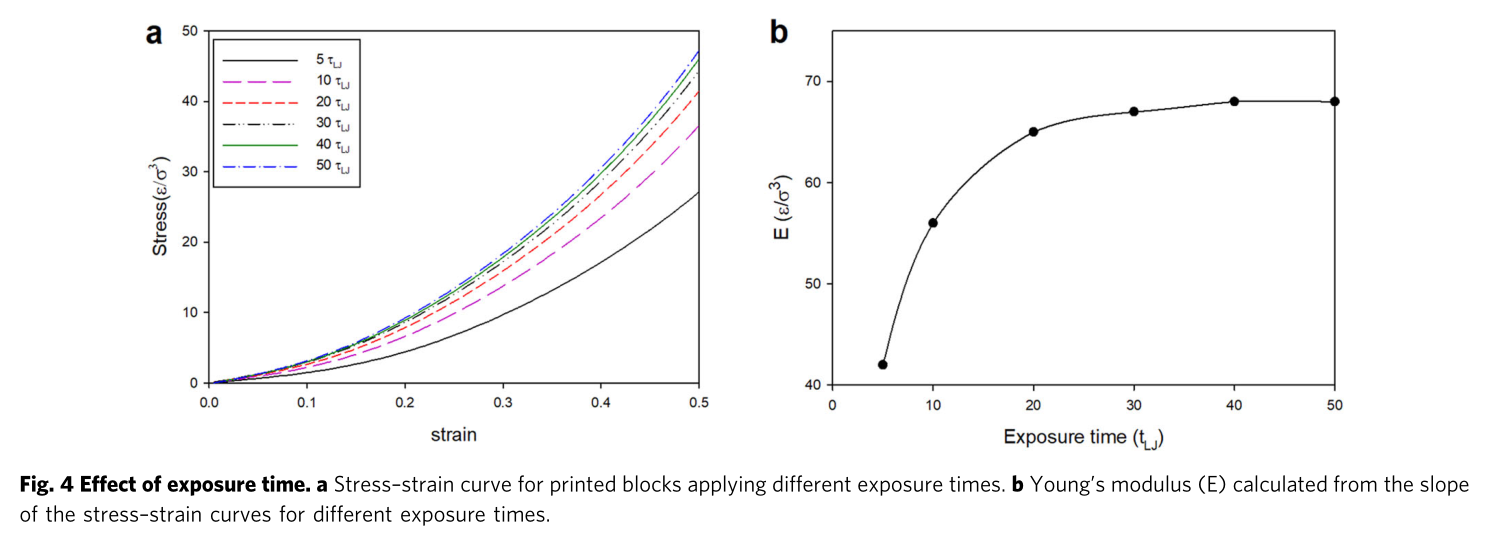
△The influence of exposure time
Stiffness of printed polymer rods
The researchers sought to understand how polymer networks with different aspect ratios behaved under external loading forces (which could lead to cracks). Therefore, in a single cell of 80σ × 8 0σ × 240σ, applying different laser powers from 10 to 50 mW, fabricates with different aspect ratios (aspect ratios) namely 10σ, 20σ, 30σ and 40σ cross-sectional diameters and Nanorods with a height of 100σ were tested. The experimental results show the relationship between the maximum deflection and the cross-sectional diameter at different laser powers. It shows that the offset decreases with increasing cross-sectional diameter at all applied laser powers, suggesting that prints with higher aspect ratios have lower stiffness and therefore higher flexibility (deformability ). becomes smaller as the laser power increases. The study also presents the distribution of strain at its maximum deformation for all fabricated samples, showing that the high-strain region of the high-aspect-ratio structure is the onset of fracture (regardless of laser power).
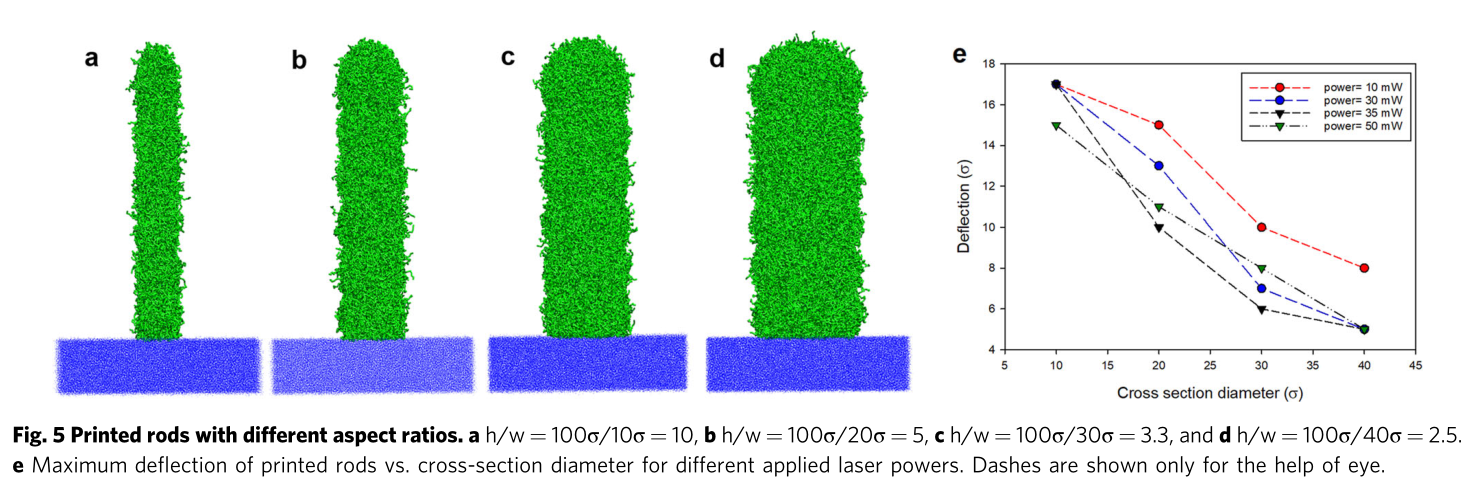
△The relationship between the maximum deflection and the diameter of the cross section
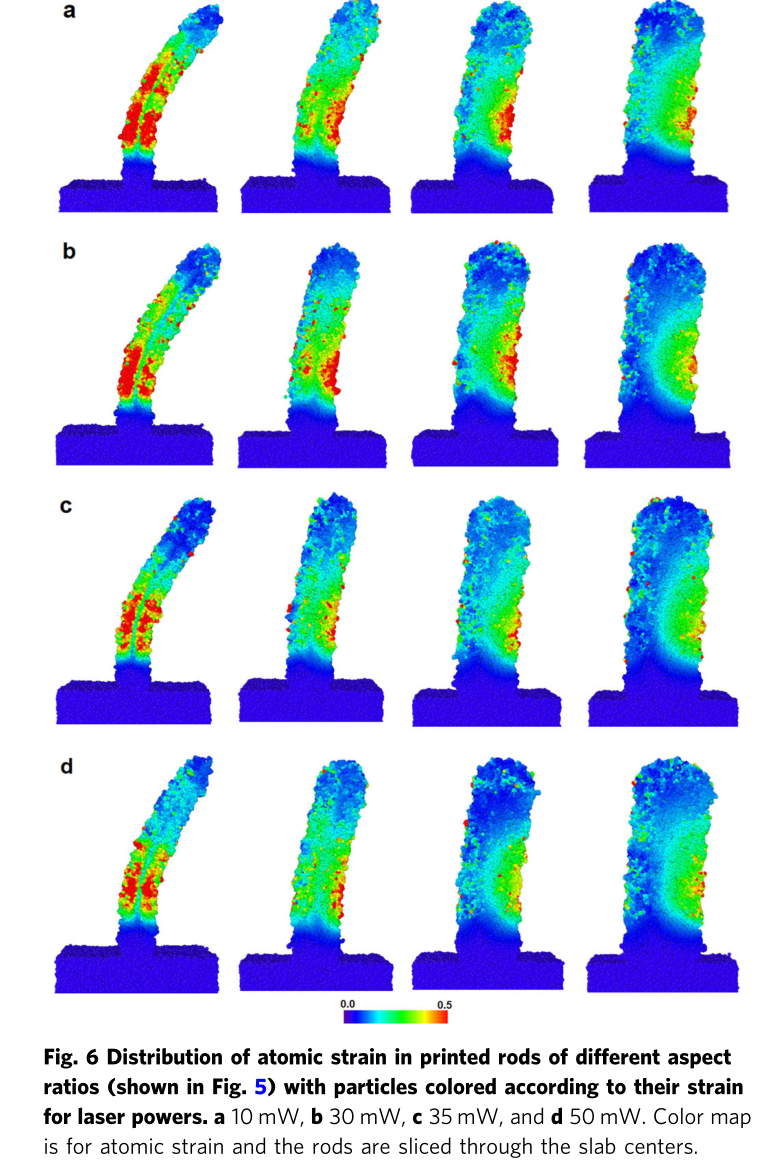
△Strain distribution simulation diagram
To produce structures with high mechanical properties, optimal printing conditions should be used. The researchers highlight the limitations of fabricating high-aspect-ratio structures in DLWs, which cannot be fully overcome by changing the printing conditions. The effect of laser power becomes less and less important as the aspect ratio of the printed object increases.Due to the observation at the nanoscale3D printingExperimental approaches to the process are limited, and the researchers propose that simulations via microscopic models can help optimize printing conditions, especially for smaller feature sizes. This research can be extended to any photoresist to study the effect of writing conditions and structure on the mechanical properties of polymer networks, potentially enabling experimentation, providing solutions to more problems, and exploring process improvement options.
For more content, please download the original text to view:https://doi.org/10.1038/s41467-022-29749-9
(responsible editor: admin)


0 Comments for “Nature sub-journal: Karlsruhe Institute of Technology looking for the best printing parameters for direct laser writing (DLW)!”